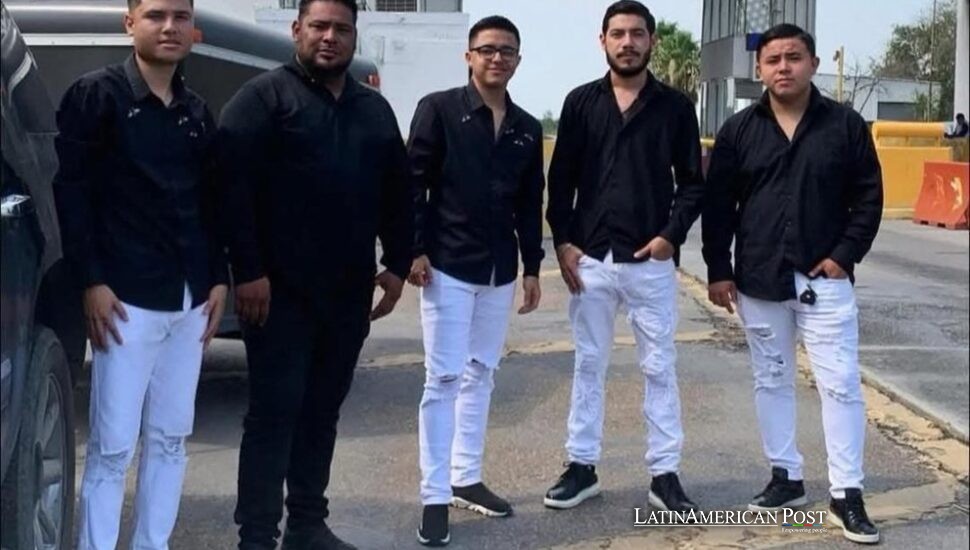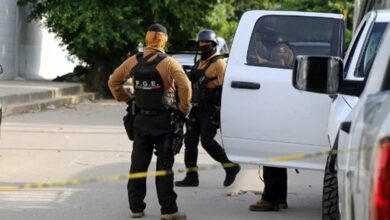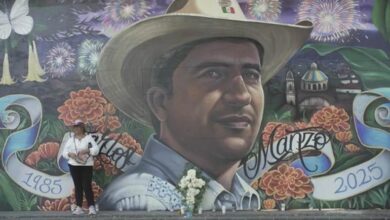Mexican Border City Rocked by Musicians’ Kidnapping and Violent End

Five members of a northern Mexico band vanished on the way to a border gig and were later found murdered. Their fate exposes the murky crossroads where music, cartel power, and desperate ambition meet—a place where melody becomes a bargaining chip for survival.
The Road to Reynosa Turns Deadly
At sunset on May 24, the five young men of Grupo Fugitivo loaded a battered van with accordions, amps, and crisp matching jackets. A private party awaited them in Reynosa, across the Río Bravo from Texas—a payday juicy enough to cover new strings and maybe studio time. They joked on Instagram Live, promising followers a live stream once they reached the venue. Then the signal cut out somewhere along Federal Highway 97, a lonely stretch of asphalt lined with scrub and the occasional roadside shrine.
By midnight, relatives’ phones were buzzing with frantic WhatsApp texts. An unknown number demanded cash—half now, half later—for the musicians’ safe return. The families scraped together savings and pawned jewelry, but the line went silent before arrangements could be made. Two days later, police, following an anonymous tip, found five bodies dumped beside an abandoned ranch house—wrists bound, instruments smashed, stage clothes shredded by desert thorns.
Investigators quickly traced the crime to a cell of the Gulf Cartel, long the shadow sovereign of Tamaulipas. Nine suspects were pulled from hideouts around Reynosa; detectives say phone logs show continued ransom calls even after the killings, a gruesome bid to bleed families who still prayed their sons were alive. Authorities have not released an official motive, but veteran crime reporters whispered two theories: either the band refused to compose a tribute corrido praising a local boss or accidentally booked a party on territory claimed by a rival crew. In a cartel country, both errors carry the same penalty.
When Melody Meets the Narco Machine
Mexico’s regional music has always flirted with outlaw lore. The old‐style corridos celebrated revolutionary heroes and humble smugglers dodging distant authorities. But the modern narcocorrido—amplified by YouTube algorithms and nightclubs awash in cartel cash—crowns real traffickers as folk kings. Singers earn envelopes of dollars to perform personalized ballads at ranch parties; refuse the request, and the following invitation may arrive with a pistol on the table.
Only a month before Grupo Fugitivo’s demise, another performer in Sinaloa canceled shows after threats over song choices. Authorities in Sonora forced a popular norteño act to cut verses deemed pro-cartel, sparking a riot when fans hurled beer cans at the stage. In Jalisco, a viral video projected an image of fugitive capo “El Mencho” behind a reggaetón artist mid-concert—the screen operator fled the state that night.
Why target musicians? Criminologists point to soft power: ballads travel where bullets cannot, infiltrating car stereos, quinceañera playlists, and migrant shelters from Tijuana to Chicago. A catchy refrain can transform a gunman into a legend, undermine official narratives, and recruit the next wave of foot soldiers. For cartel chiefs, silencing or co-opting regional bands is as strategic as seizing a highway corridor.
Yet the fascination is double-edged. Many ordinary Mexicans crave the storytelling, the accordions, and the echo of communities long ignored by politicians. Crowds pack dance halls to shout choruses that blend love, hardship, and outlaw swagger. That tension—artistic pride versus brutal coercion—creates a minefield where groups like Grupo Fugitivo try to earn a living. They post feel-good TikToks, play family weddings, dream of U.S. visas, and pray every booking agent is legit.
Echoes of Violence and Questions Unanswered
In the aftermath, Reynosa tuned its radios to a hush. Local clubs canceled weekend bands “out of respect,” though bartenders quietly admitted fear played a more significant part. The state prosecutor staged a press conference beside a table of confiscated rifles, vowing justice. Families gathered at a modest funeral parlor, clutching framed photos of smiling sons on cheap stages lit by colored LEDs.
Meanwhile, Mexico’s federal government repeated a familiar refrain: homicide numbers are falling, and kidnappings are down. Analysts countered with grim spreadsheets showing Tamaulipas still ranking among the deadliest border corridors. U.S. travel advisories warned tourists to stay away, and the Gulf Cartel landed on Washington’s list of “global terrorist organizations”—a label with little effect on the ground, where local police often share lineage or payroll with the same gunmen they are meant to chase.
Residents learned long ago to navigate a moral fog. They pass checkpoints manned by men in balaclavas—sometimes soldiers, sometimes not—keeping their eyes forward and music low. They know which roads go quiet after dark, which neighborhoods spark with automatic fire on payday Fridays, and which fiestas carry unspoken insurance because a capo’s nephew loves cumbia. Each killing chips another fragment of community trust, convincing many that the safest witness is the one who saw nothing.
Yet grief has its momentum. Fans uploaded mashups of Grupo Fugitivo’s last videos with candle emojis and guitar solos slowed to a funeral wail. A rival band posted a corrido honoring the victims, calling them “cantantes de pueblo, hijos del polvo” (singers of the people, sons of the dust). Within hours, the track trended across northern Mexico, proving that music persists even as musicians fall.
What lessons remain? Parents warn teens picking up accordions to weigh risks as well as rhythms. Promoters vet callers twice, cross-checking venues and verifying payments before the wheels roll. Some artists pivot to softer romantic tunes, distancing themselves from the narco spotlight. Others double down, arguing that state or criminal censorship cannot dictate art. The stage, they insist, belongs to whoever dares climb it.
Also Read: Argentina’s Frozen Mystery: The Unresolved Fate of Dr. Janet Johnson
For now, the desert wind still rattles the broken strings of guitars abandoned at the crime scene. The killers sit in holding cells, silent behind steel doors, while prosecutors assemble charges that may never reveal who ordered the hit or why. In Tamaulipas, motives blur faster than blood on dust. The price stays crystal clear: five lives, a family’s future melodies stilled, and another verse in Mexico’s long, dissonant ballad of art and violence—a song no one wants to hear, yet everyone knows by heart.





